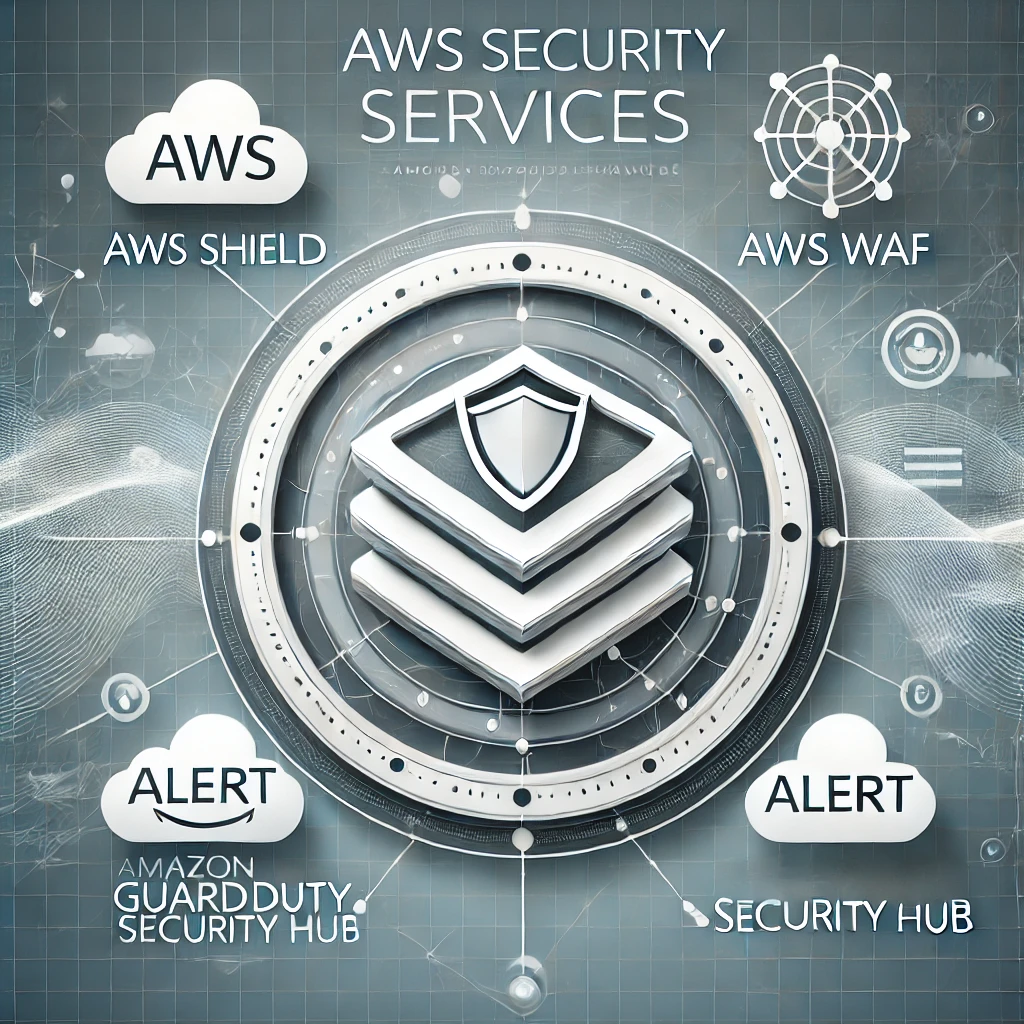AWS Shield, AWS WAF, Amazon GuardDuty, and AWS Security Hub: Use Cases, Benefits, and Drawbacks of Combining Them
AWS offers a variety of security services to help manage risks and enhance security in cloud environments. Among these, AWS Shield, AWS WAF, Amazon GuardDuty, and AWS Security Hub play distinct roles in creating a comprehensive security framework. This article provides a detailed explanation of these services, their use cases, and the benefits and drawbacks of combining them for optimal security management.
Overview and Roles of Each Service
AWS Shield
- Purpose: Protects AWS environments from DDoS attacks.
- Types:
- Shield Standard: Free, offers basic protection against common DDoS attacks.
- Shield Advanced: Paid, includes advanced protections, cost protection, and 24/7 support.
AWS WAF
- Purpose: A Web Application Firewall that protects against common web threats such as SQL injection and cross-site scripting (XSS).
- Functionality:
- Filters specific traffic patterns.
- Protects application layer (Layer 7).
Amazon GuardDuty
- Purpose: Detects threats within AWS environments using machine learning and external threat intelligence.
- Functionality:
- Monitors for abnormal account behavior or unauthorized access.
- Provides real-time alerts across AWS accounts and services.
AWS Security Hub
- Purpose: Centrally manages security across AWS environments.
- Functionality:
- Aggregates threat data from AWS services and third-party tools.
- Evaluates compliance with best practices and regulatory frameworks.
Use Cases of Each Service
1. Defending Against External DDoS Attacks
- Service: AWS Shield
- When to Use: For services at high risk of DDoS attacks, such as e-commerce or financial platforms.
- Recommendation: Use Shield Advanced for critical systems requiring cost protection and premium support.
2. Protecting Web Applications
- Service: AWS WAF
- When to Use: For application-layer (Layer 7) protection, such as blocking SQL injection or XSS attacks.
- Recommendation: Essential for services requiring custom traffic filtering rules.
3. Detecting Abnormal Operations or Unauthorized Access
- Service: Amazon GuardDuty
- When to Use: For real-time monitoring of AWS accounts with complex access patterns or external integrations.
- Recommendation: Ideal for environments with high activity across multiple regions or accounts.
4. Centralized Security Management
- Service: AWS Security Hub
- When to Use: For consolidating alerts, managing security posture, and ensuring compliance with standards.
- Recommendation: Best suited for organizations requiring centralized visibility across multiple AWS services and accounts.
Benefits of Combining These Services
1. Multi-Layer Defense
- Details:
- Shield protects against network-layer threats (DDoS).
- WAF addresses application-layer vulnerabilities.
- GuardDuty monitors account and API-level anomalies.
- Security Hub unifies security data for comprehensive management.
- Example: Shield mitigates DDoS attacks while WAF blocks malicious application traffic, and GuardDuty detects unauthorized API calls.
2. Complementary Threat Intelligence
- Details:
- Threat data from GuardDuty and WAF are centralized in Security Hub.
- Enables enhanced analysis and rapid decision-making.
- Example: A suspicious IP flagged by GuardDuty can inform WAF rules to block future traffic from the source.
3. Faster Incident Response
- Details:
- Security Hub prioritizes incidents and facilitates automated responses via AWS Lambda integrations.
- Example: A GuardDuty alert triggers a Lambda function to isolate affected resources.
4. Cost Efficiency
- Details:
- Centralized management in Security Hub reduces redundant configurations and operational overhead.
- Proactive blocking via WAF and GuardDuty minimizes downstream damage costs.
Drawbacks of Combining These Services
1. Increased Costs
- Details:
- Costs scale with usage. For example:
- GuardDuty: Charges based on the volume of analyzed data.
- WAF: Costs increase with the number of rules and processed requests.
- Costs scale with usage. For example:
- Solution: Regularly monitor usage and optimize configurations.
2. Complex Management
- Details:
- Each service requires separate configurations and maintenance.
- Misconfigurations can lead to unnecessary alerts or gaps in security.
- Solution: Use predefined templates or automate configurations with AWS CloudFormation.
3. Excessive Alerts
- Details:
- Large volumes of alerts from combined services can lead to alert fatigue.
- Solution: Implement prioritization and filtering mechanisms in Security Hub.
4. Learning Curve
- Details:
- Requires expertise in configuring and interpreting each service.
- Mismanagement can expose vulnerabilities or lead to inefficiencies.
- Solution: Invest in training and documentation for security teams.
Best Practices for Effective Use
-
Define Security Objectives
- Determine specific threats to address (e.g., DDoS, application vulnerabilities).
-
Leverage Automation
- Use AWS Lambda for automated incident response.
- Automate configurations with IaC tools like CloudFormation or Terraform.
-
Regularly Review Security Posture
- Use Security Hub for continuous compliance monitoring and improvement.
-
Optimize Cost
- Regularly analyze usage metrics and scale resources to match needs.
- Use GuardDuty findings to refine WAF rules and reduce redundant scans.
Conclusion: Optimal Use of AWS Security Services
Combining AWS Shield, AWS WAF, Amazon GuardDuty, and AWS Security Hub creates a robust, multi-layered defense for AWS environments. These services complement each other, addressing threats from the network layer to application vulnerabilities and account-level anomalies.
However, effective use requires careful management to balance cost, operational complexity, and security needs. By defining clear objectives and leveraging automation, organizations can maximize the benefits of these services while minimizing drawbacks. Adopting these best practices ensures a secure, efficient, and resilient cloud environment.
